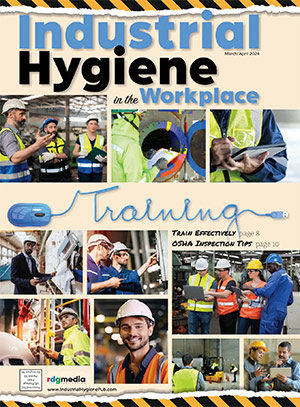ANSI/ISEA Z89.1-2014: Head Protection Guidelines
“The ANSI/ISEA Z89.1 Standard for Head Protection is vital to Bullard’s design and manufacturing process for head protection; it’s used to measure and ensure that our products mitigate the impact, penetration, and electrical hazards today’s workers face. With market emphasis on enhanced head protection, it’s important the standard include these points so manufacturers can produce products customers are confident in.” Matt King, Bullard Global Product Portfolio Manager, Head Face Protection
History
It should go without saying: Hard hats and head protection must be utilized and maintained properly to ensure safety. Workplaces and their environments can change, with new hazards appearing depending on the place or task. As of June 3, 2014, the American National Standards Institute (ANSI) issued approval for ANSI/ISEA Z89.1-2014, American National Standard for Industrial Head Protection.
The purported goal of ANSI/ISEA Z89.1-2014 was to eliminate ambiguity regarding characteristics and requirements of industrial head protection. This standard, written by members of ISEA’s Head Protection Group, is a revised version of the 2009 edition. It was approved by a consensus review panel of tech experts, unions, construction industry, test labs, certification agencies and government agencies.
The core performance requirements for head protection remain unchanged. These include the following:
- Resist penetration and deflect blows to the head
- Possess a suspension system that can absorb the force of impact
- Serve as an insulator against electrical shocks (when applicable)
- Material is water-resistant and slow-burning
- Shield the scalp, face, neck and shoulders
Why Standard is Important:
We all know our cranium is hard and has evolved to protect the brain. The natural protection given to the human brain, however, is only suitable for minor hazards. Normal cranial protection is not enough when an individual is exposed to certain dangers. Therefore, industrial workers must wear hard hats to further protect their heads.
According to the OSHA standard 29 CFR 1910.135, “Employees working in areas where there is a possible danger of head injury from impact, or from falling or flying objects, or from electrical shock and burns, shall be protected by protective helmets.” However, the OSHA standard does not specifically cover any criteria for said protective helmets. It does require compliance with ANSI/ISEA Z89.1-2014. As already noted, industrial hard hats must not only absorb the impact of blows to the head; they also must serve as insulators against electric shocks; shield the scalp, face, neck and shoulders; and be water-resistant and slow to burn. This standard is further designed to prepare hard hats for any of the above anticipated forces—through rigorous testing of the helmets.
Key Compliance Requirements:
 There were three important updates in ANSI/ISEA Z89.1-2014, including performance and testing requirements for industrial hard hats. It also highlights the types and classes of protective helmets to provide employers with options, so they can provide appropriate protection for specific hazards present in their workplaces.
There were three important updates in ANSI/ISEA Z89.1-2014, including performance and testing requirements for industrial hard hats. It also highlights the types and classes of protective helmets to provide employers with options, so they can provide appropriate protection for specific hazards present in their workplaces.
ANSI/ISEA Z89.1-2014 addresses the following:
- Specifications for helmets by Type (based on location of impact force) and Class (based on electrical insulation)
- Impact in occupational settings under normal temperature conditions and at high and low temperatures
- Safety recommendations for hard hats worn in the reversed position
- Requirements for high-visibility helmets
- Test methods for evaluating all requirements
- User cautions and recommendations regarding helmet care
Hard hats are categorized by impact type. Top impact (Type I) hard hats are designed to reduce the force of impact on top of the head. Top/lateral impact, or Type II, hard hats reduce the force of an object that may directly impact the top of the head, and are required to reduce the force from a side blow to other parts of the head.
Hard hats are classified as follows, per ANSI:
- Class G (General) is an all-purpose, general helmet that provides good impact and penetration protection, but it offers limited voltage protection (up to 2,200 volts)
- Class E (Electrical) provides the highest level of protection from high-voltage shock (up to 20,000 volts) and is especially well suited for electrical work
- Class C (Conductive) does not protect against electric conductors
Some important updates contained in this version include optional testing and marking features for head protection for use in high-temperature environments, as well as editorial revisions to clarify test procedures. In addition to the classification of head protection, as stated above, helmets that comply with the standard’s requirements need to be marked with the correct certification.
Resources:
- For more information on the markings, as well as the other aspects of the updated standard, a copy of ANSI/ISEA Z89.1-2014 can be purchased from the International Safety Equipment Association from its web store: https://bit.ly/3OROsvK
- For a blog discussing the standard on ANSI’s website, go to: https://blog.ansi.org/2016/06/ansiisea-z891-industrial-head-protection/
Share on Socials!
Threshold Tips for Surviving a Federal OSHA Inspection
Heat Stress Assessment & Prevention
Safe Industrial Plant Gas Monitoring
Leaders in Industrial Hygiene
Council for Accreditation in Occupational Hearing Conservation (CAOHC)
Subscribe!
Sign up to receive our industry publications for FREE!










